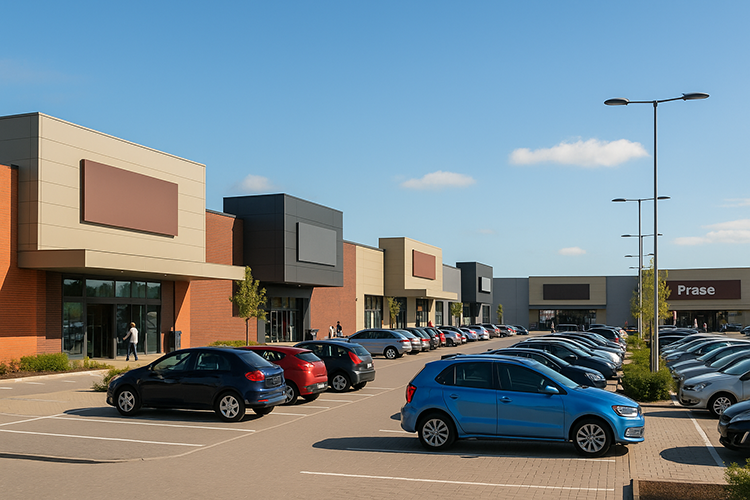Smaller Towns Driving Romania’s Retail Park Expansion
Romania’s modern retail market is entering a new growth phase, with developers increasingly focusing on small and medium-sized towns as the next wave of expansion. According to the “ExCEEding Borders | Retail Parks: Diverse Growth, Shared Momentum” report by Colliers, published in October 2025, communities of 20,000 to 50,000 inhabitants are becoming prime targets for investment as rising incomes and growing demand for modern retail formats reshape regional markets.
While large cities have traditionally accounted for roughly three-quarters of Romania’s modern retail stock, Colliers’ research shows that towns with fewer than 100,000 inhabitants currently offer only about 70 square metres of modern retail space per 1,000 residents—a level several times lower than comparable markets across Central and Eastern Europe.
“Romania still has significant growth potential in the modern retail sector,” said Simina Niculita, Director | Partner | Retail Agency at Colliers Romania. “We see solid demand fuelled by rising consumption and the interest of international brands in expanding, particularly through retail parks. These projects provide attractive yields for investors and an adaptable format for tenants, which makes them a winning long-term solution. In the coming years, every town with an active local economy and a population of at least 15,000 to 20,000 inhabitants will become a focal point for this type of development.”
Across Central Europe, the same pattern is visible. In Slovakia, developers are increasingly targeting secondary cities. “People don’t want to travel 30 minutes for shopping anymore,” explained Milan Šarközi, Managing Director of Mayflower Slovakia, in an interview with CIJ EUROPE in November 2024. “They welcome local retail schemes that meet their daily needs.” The company’s recent projects include compact retail parks in towns such as Šaľa and Nové Zámky—schemes designed to fit populations between 5,000 and 15,000.
In Poland, developers are also filling supply gaps outside major metropolitan areas. “There are still cities in central Poland where there are no modern shopping facilities,” a 2024 CIJ EUROPE report quoted regional retail specialists as saying. “Retail parks fit perfectly into that supply gap—they complement online trade and often constitute the final link in the chain of goods ordered by consumers online.”
Back in Romania, private investors are actively expanding retail-park networks in small towns. “Most of the chain’s retail parks will be located in small towns,” confirmed Victor Căpitanu, Co-Founder of One United Properties, when the developer announced its entry into the retail-park segment earlier this year. The company’s strategy focuses on provincial locations where purchasing power and infrastructure are improving faster than the existing retail supply.
Analysts say this evolution reflects both market maturity and new consumer expectations. The expansion of retail parks into secondary and tertiary cities is helping balance regional development, offering modern retail experiences to consumers who previously had to travel long distances to shop. “As incomes rise, every town with an active local economy will eventually attract at least one modern retail park,” said Simina Niculita of Colliers.
Colliers’ data shows that Romania’s modern retail density in major cities with over 100,000 inhabitants is roughly on par with peers such as Poland and Hungary, though still below Czechia. The largest gap remains in towns with populations between 10,000 and 50,000, where the country’s retail stock per capita lags far behind regional averages.
Developers are also integrating ESG-focused designs—energy-efficient buildings, green spaces and facilities for electric vehicles—and are turning these parks into community hubs combining shopping, dining and leisure. Discount and value retailers such as Pepco, Lidl, Jysk and KiK continue to anchor most of the new schemes, ensuring steady footfall and dependable income streams.
The trend signals a broader transformation across Central and Eastern Europe: retail is no longer confined to the big cities. Instead, it is evolving into a local service infrastructure—bringing modern retail and social spaces closer to smaller communities while offering developers and investors a new, resilient growth frontier.
Source: Colliers Romania and CIJ EUROPE









